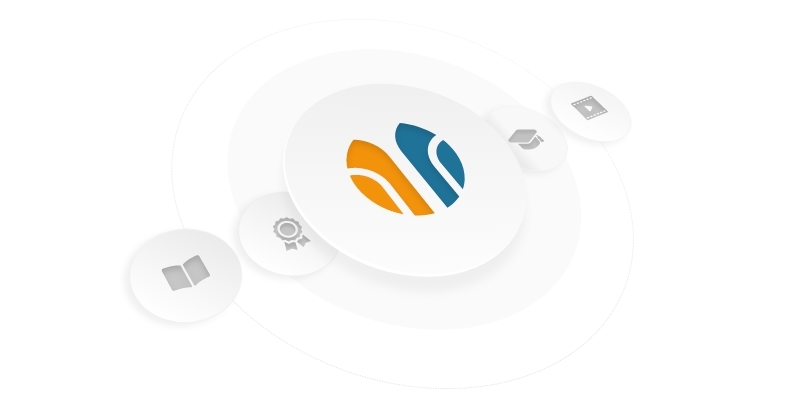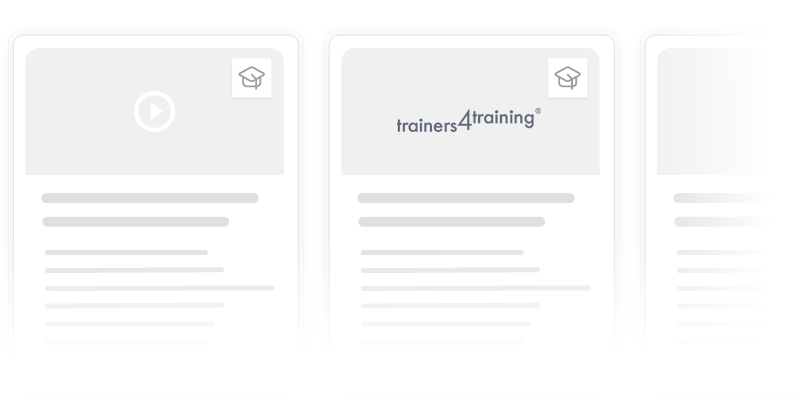
主な機能とサービス
SAPのラーニングツールと製品で、飛躍的なスタートを切りましょう。
コーポレート・ラーニング - 法人向け定額料金
法人様向け定額料金ご都合の良い時間に、世界中のSAPエキスパートから学べます。
SAPラーニング・プラットフォーム
スキルアップに役立つ機能
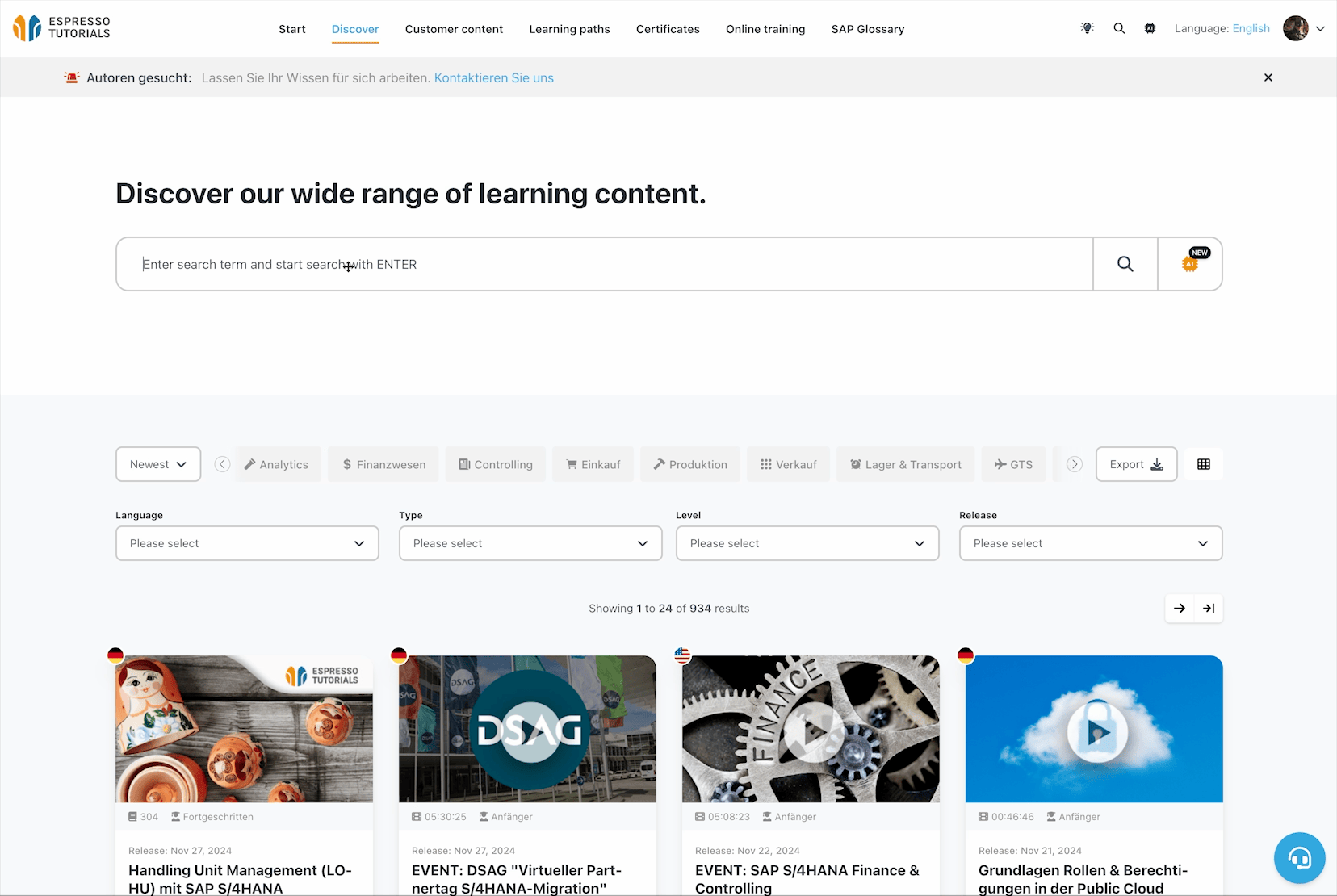
検索
コンテンツライブラリから特定の用語をすばやく簡単に検索できます。
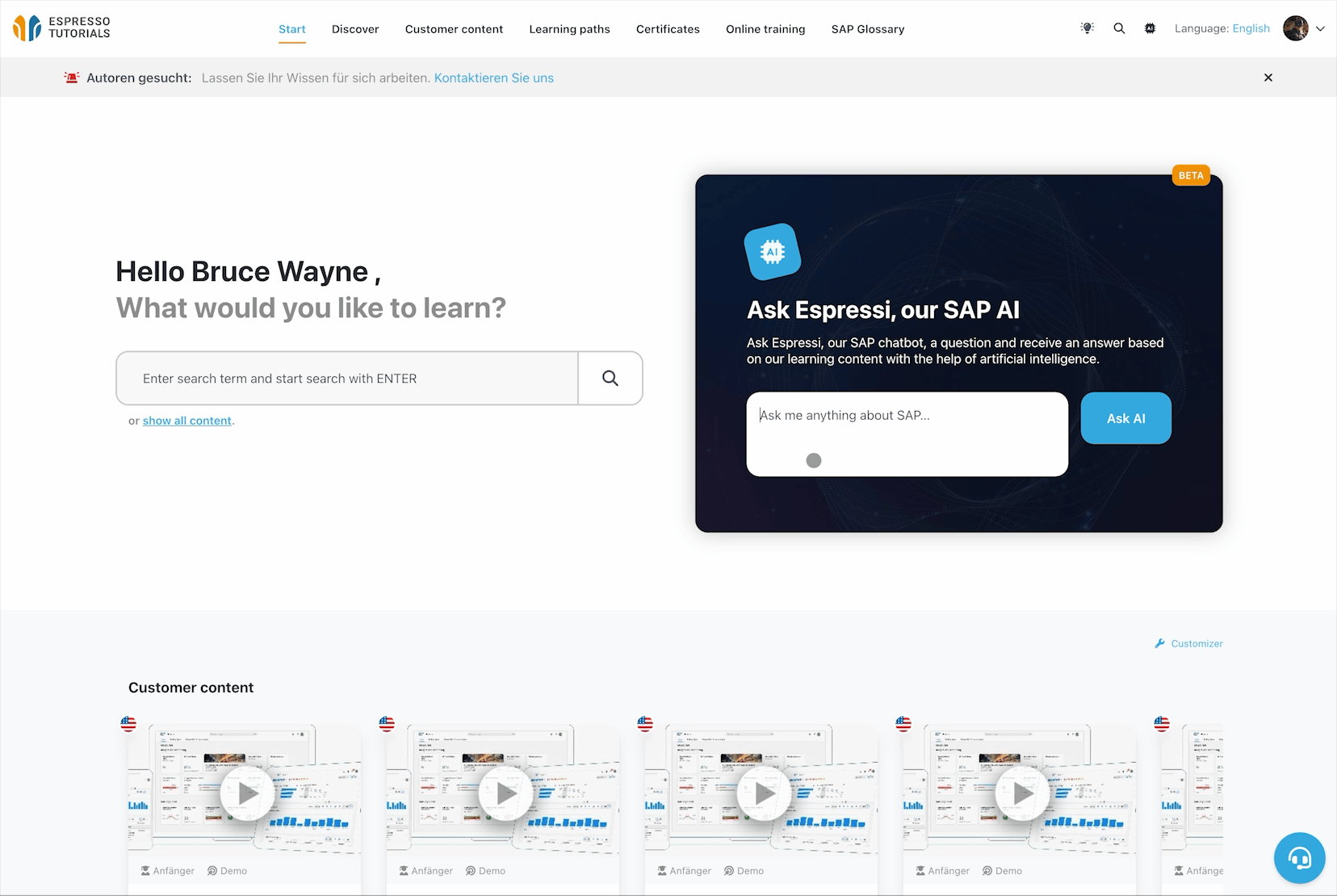
AI統合
AI副操縦士EspressiがあなたのSAPに関する質問にお答えします。
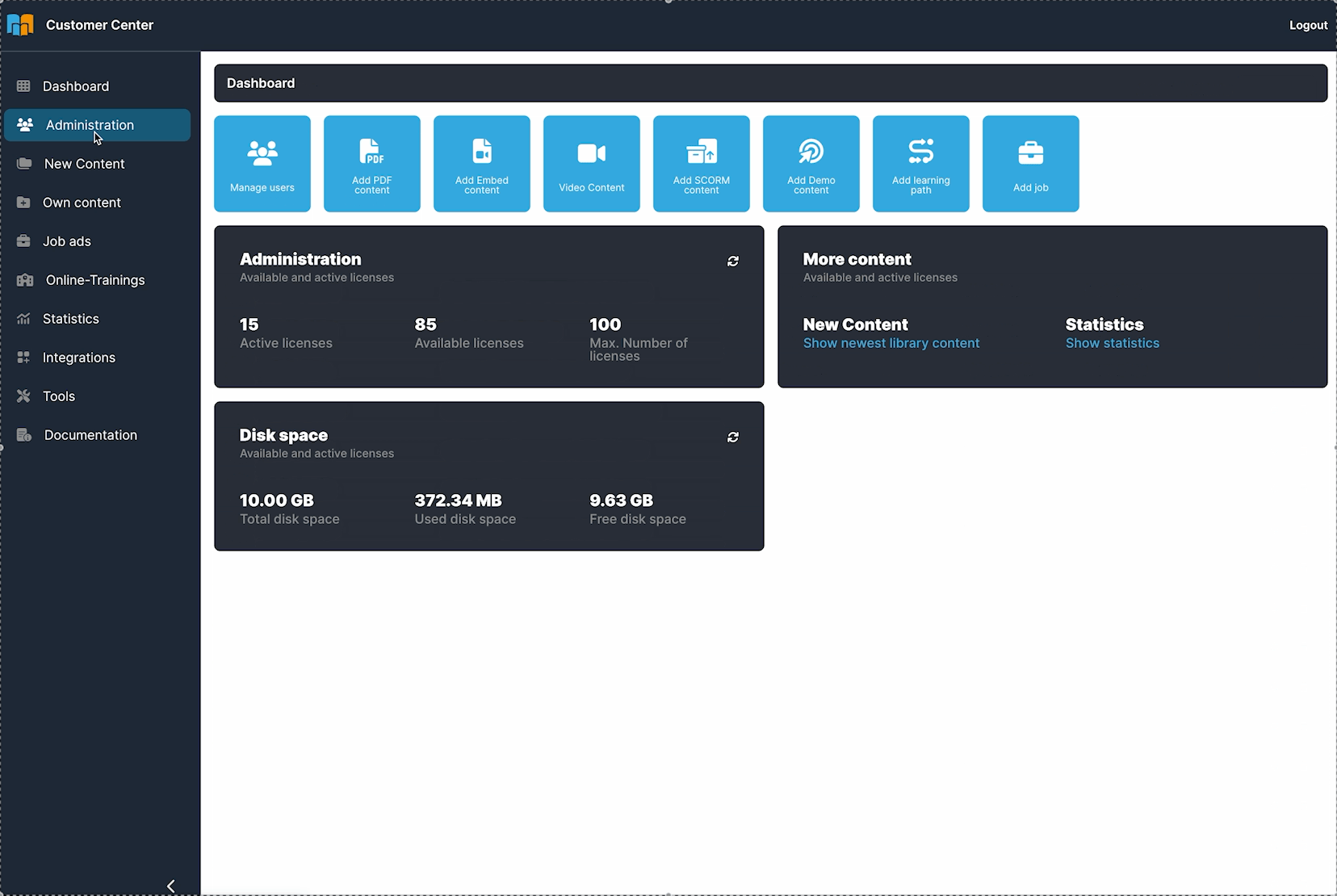
カスタマーセンター
カスタマーセンターでユーザーとコンテンツを迅速かつ簡単に管理できます。
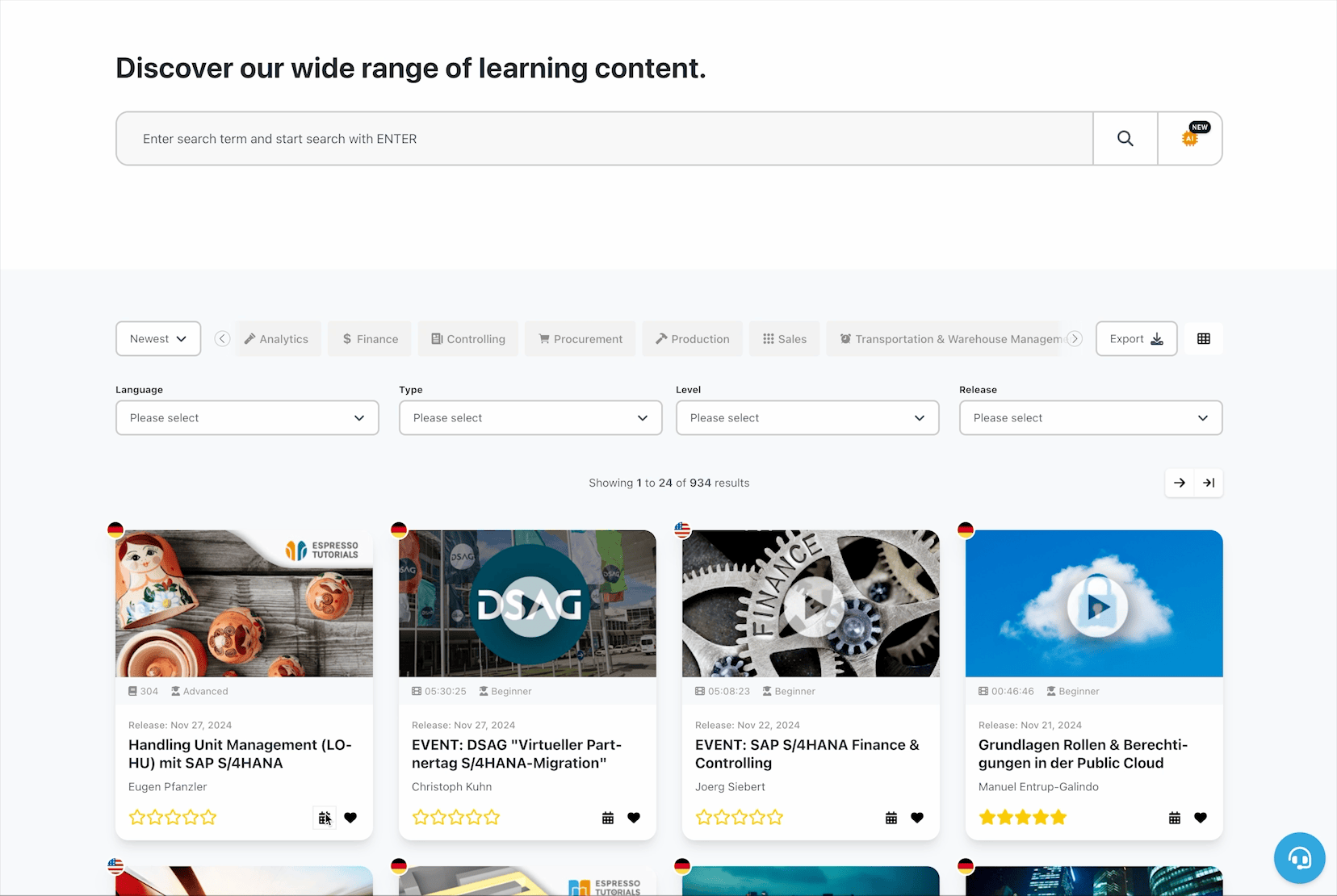
注意事項
トレーニングのリマインダーを作成し、OutlookまたはAppleカレンダーに保存します。
シンプルで透明性の高い価格設定
あなたのニーズに最適なレートを選び、始めましょう!
日々のSAPトレーニングやキャリア開発に最適です。
$228 年間 インスタント・アクセス 自動更新 多言語コンテンツ
1000以上の電子書籍とビデオ ラーニング・パス 10 AIコパイロットのリクエスト
専門知識を深めるための綿密なトレーニングのための、最も費用対効果の高いプランです。
$468 年間 インスタント・アクセス 自動更新 多言語コンテンツ
1000以上の電子書籍とビデオ ラーニング・パス AIコパイロットのリクエスト50件 証明書を含む クリックスルー・デモ trainers4トレーニング内容
企業、部門、チームのために設計された企業アクセス。
法人割引 企業に最適 5人以上のユーザー 多言語コンテンツ
1000以上の電子書籍とビデオ ラーニング・パス 100以上のAIコパイロットのリクエスト 証明書 クリックスルー・デモ trainers4トレーニング内容 オンライン・トレーニング ユーザー管理 社内学習コンテンツ 請求書ごとの支払い シルバー、ゴールド、プラチナ
注文処理、注文関連の問い合わせ、返品は、当社のオンライン再販業者であり、記録商であるPaddle.com(Paddle.com Market Ltd, Judd House, 18-29 Mora Street, London EC1V 8BT)が行います。お客様のデータは、エスプレッソチュートリアルGmbHに渡され、製品の配送に使用されます。
価格はすべて消費税込みで、地域によって異なる場合があります。当社のオンライン商品をご購入された場合、14日間の撤回権を放棄したものとみなされます。
詳細はお問い合わせください。
プレミアムGOLDおよびPLATINUMコンテンツ
ゴールドとプラチナのサブスクリプションでは、追加のプレミアムコンテンツに無料でアクセスできます。
学習内容:89

HANA Admin 01 - Einführung

HANA Admin 02 - Voraussetzung

HANA Admin 03 - Installation

HANA Admin 04 - Architektur

HANA Admin 05 - Deployment

HANA Admin 06 - Admintools

HANA Admin 07 - Monitoring

HANA Admin 08 - Backup

HANA Admin 09 - Berechtigungen

HANA Admin 10 - Verfügbarkeit

CO Delta 01 - Einführung SAP und FIORI

CO Delta 02 - Einführung in SAP CO

CO Delta 03 - Stammdaten

CO Delta 04 - Reporting

MM Delta 01 - Einführung

MM Delta 02 - Neues Datenmodell

MM Delta 03 - Überblick Stammdaten

MM Delta 04 - Angebotsprozess

MM Delta 05 - Bezugsquellenfindung

FI Delta 01 - Einführung

FI Delta 02 - Hauptbuchhaltung

FI Delta 03 - Integration

FI Delta 04 - Kreditorenbuchhaltung

FI Delta 05 - Debitorenbuchhaltung

FI Delta 06 - Sonderfälle

FI Delta 07 - Anlagenbuchhaltung

S/4HANA FIORI Schnupperkurs

SAP Expertenwissen

MM Kompakt - Materialwirtschaft in S/4HANA

Serienfertigung in SAP-ERP und S/4HANA (Repetitive Manufacturing)

ISDFPS - Industry Solution Defense Forces & Public Security

QM Kompakt für S/4HANA

SAP Expertenwissen: Kontenfindung in der Materialwirtschaft in S/4HANA und SAP ERP (Sourcing & Procurement) – mit Customizing

S/4HANA Customizing in der Public Cloud

Post Outgoing Payments

Create Supplier Invoice

Post Goods Receipt for Purchase Order

Create Activity Types and Perform Activity Price Planning

Settling and Closing a Production Order

Manage Purchase Requisitions - Purchase Order

Manage Purchase Requisition - Sourcing

Create Purchase Requisition

Manage Production Operations

Manage Production Orders

Check Material Coverage

Manage Billing Documents

Manage Outbound Deliveries

Create Billing Documents

Manage Planned Orders

Manage Outbound Deliveries

Create Outbound Deliveries

Create Sales Orders

Manage Cost Centers

Material Cost Estimate

Create GL Account

Create Work Center

Create Routing

Create Bill of Material

Create Material Master

Create Business Partner

Manage Global Hierarchies

Manage Flexible Hierarchies

P&L Actual

Sales Accounting Overview

Dunning Level Distribution

Incoming Sales Orders

Display Document Flow

Manage Posting Periods

Manage Automatic Payments

Manage G/L Account Master Data (Version 2)

Balance Sheet/Income Statement

Manage Journal Entry Templates

Display Journal Entries in T-Account View

Upload General journal Entries

Manage Allocations

Reassign Costs and Revenues

Import Financial Plan Data

Manage Cost Centers (Advanced)

Manage Internal Orders

Manage Supplier Line Items
証明書:14

SAP S/4HANA Finanzwesen
- ET Einsteiger-Zertifikat
- 100 Multiple-Choice-Fragen
- Vorbereitung zur SAP-Zertifizierung C_TS4FI_2021
- SAP S/4HANA for Financial Accounting Associates

SAP S/4HANA Controlling
- ET Einsteiger-Zertifikat
- 100 Multiple-Choice-Fragen
- Vorbereitung zur SAP-Zertifizierung C_TS4CO_2021
- SAP S/4HANA for Management Accounting Associates

SAP S/4HANA Finance
- ET entry-level certificate
- 100 multiple choice questions
- Preparation for SAP certification C_TS4FI_2021
- SAP S/4HANA for Financial Accounting Associates

SAP HCM für SAP S/4HANA
- ET Einsteiger-Zertifikat
- 100 Multiple-Choice-Fragen
- Vorbereitung zur SAP-Zertifizierung
- SAP HCM für SAP S/4HANA C_THR12_67

SAP S/4HANA Controlling
- ET entry-level certificate
- 160 multiple choice questions
- Preparation for SAP certification C_TS4CO_2021
- SAP S/4HANA for Management Accounting Associates

SAP S/4HANA Einkauf
- ET Einsteiger-Zertifikat
- 140 Multiple-Choice-Fragen
- Vorbereitung zur SAP-Zertifizierung
- SAP S/4HANA Einkauf C_TS452_2021

SAP S/4HANA Verkauf
- ET Einsteiger-Zertifikat
- 210 Multiple-Choice-Fragen
- Vorbereitung zur SAP-Zertifizierung
- SAP S/4HANA Verkauf C_TS462_2022

SAP S/4HANA Produktion
- ET Einsteiger-Zertifikat
- 150+ Multiple-Choice-Fragen
- Vorbereitung zur SAP-Zertifizierung
- SAP S/4HANA Produktion C_TS422_2021

SAP S/4HANA Warehouse Management (EWM)
- ET entry-level certificate
- 80 multiple choice questions
- Preparation for SAP certification C_S4EWM_2020
- SAP S/4HANA Warehouse Management (EWM)

SAP S/4HANA Sales
- ET advanced-level certificate
- 210 multiple choice questions
- Preparation for SAP certification
- SAP S/4HANA Sales C_TS462_2021

Integrierte Geschäftsprozesse in SAP S/4HANA
- ET Einsteiger-Zertifikat
- 120+ Multiple-Choice-Fragen
- Passend zum Kurs TS410
- SAP S/4HANA Integrierte Geschäftsprozesse

SAP S/4HANA Production Planning
- ET entry-level certificate
- 50+ multiple choice questions
- Preparation for SAP certification
- SAP S/4HANA Production Planning (PP) C_TS422_2020

SAP S/4HANA Materials Management
- ET entry-level certificate
- 140 multiple choice questions
- Preparation for SAP certification
- SAP S/4HANA Purchasing C_TS452_2021

SAP Analytics Cloud
Validate your SAP skills and expertise for SAP Certified Associate - Data Analyst - SAP Analytics Cloud
学習内容:
証明書:
最新記事

Espresso Tutorials is paving the way for the future
Co-founders and current managing directors Jörg Siebert and Martin Munzel...

New Spanish-language book release: Primeros pasos con SAP Core Data Services
Don’t miss our latest Spanish-language book release Primeros pasos con...

New Release: Practical Guide to SAP S/4HANA Cloud for Customer Payments
We are pleased to announce our latest book release Practical...

Transportation Settlement in SAP S/4HANA
Learn more about Espresso Tutorials’ latest book release Transportation Settlement...

New Spanish-language book release: Estrategias y mejores prácticas en despliegues de SAP S/4HANA
Learn more about Espresso Tutorials’ latest Spanish-language book release by...

New release – Invoice Verification and the GR/IR in SAP S/4HANA
Espresso Tutorials is pleased to announce our latest book release...

New release – Integrated Business Processes in SAP S/4HANA
Espresso Tutorials is pleased to announce our newest book release...

SAP BI Unveiled: Understanding SAP’s BI Portfolio
Check out our latest SAP video tutorial release by NDZ...

New SAP book release: Practical Guide to SAP Entitlement Management with SAP S/4HANA
Espresso Tutorials is pleased to announce the publication of Practical...

New Release: First Steps in SAP S/4HANA Universal Parallel Accounting by Janet Salmon
Espresso Tutorials is pleased to announce our latest book release...

New release – Practical Guide to SAP CO-PC (Product Cost Controlling) in SAP S/4HANA
Don’t miss the latest Espresso Tutorials release Practical Guide to...

New Release: Introduction to SAP S/4HANA
Don’t miss the latest Espresso Tutorials release – Introduction to...

What is New in SAP Global Trade Services, edition for SAP HANA
Curious what’s new in SAP GTS? The most recent version...

New SAP Book Release – A Practical Guide to Cybersecurity Governance for SAP
Don’t miss our latest book release A Practical Guide to...

New Release – The SAP Material Master in SAP S/4HANA – a Practical Guide (3rd edition)
Don’t miss the 3rd edition of the best-selling book The...

New Spanish-language book release: SAP Héroes
Don’t miss our latest Spanish-language book release SAP Héroes by...

New Release: Cálculo de Nómina en SAP by Antonio de Ancos Cid
Espresso Tutorials is pleased to announce our latest Spanish-language book...

New Release: Practical Guide to SAP ABAP – Part1 Conceptual Design, Development, Debugging // プラクティカルガイドSAP ABAP パート1 設計・開発・デバッグ
Don’t miss Espresso Tutorials’ latest Japanese-language book release translated by...

New book release – Primeros pasos en SAP S/4HANA
Don’t miss our latest Spanish-language book release Primeros pasos en...

Register now for free Journey to SAP S/4HANA event
Don’t miss Journey to SAP S/4HANA September 19, 2023. This...

New 2nd Edition – Practical Guide to SAP GTS
Don’t miss our newest publication – Practical Guide to SAP...

New French-language release: Le débogueur SAP pour développeurs et fonctionnels
Espresso Tutorials is very pleased to announce our latest French-language...

Hot off the presses – Practical Guide to Using Focused Build for SAP Solution Manager
Hot off the presses – Practical Guide to Using Focused...

New Book Release – Access Risk Management in SAP
Don’t miss our latest release Access Risk Management in SAP...
お問い合わせ

お手伝いさせてください
デジタルサブスクリプションやSAP Learning Platformの詳細については、お気軽にお問い合わせください。お客様の学習ニーズに合わせたソリューションや、SAPトレーニングの次のステップの計画については、お気軽にお問い合わせください。
Alice Adams
セールス・マネージャー
















